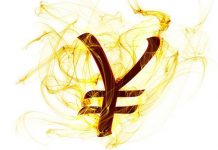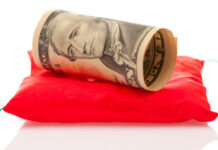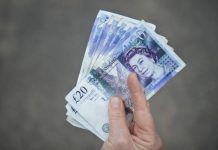The S&P500 advanced 0.47%, the Dow added 0.95%, as Nasdaq surged 2.30% in New York, as the Trump administration proposed more fiscal help including tax rebates up to $1200 per person, but more importantly, emphasized that more help is on the way.
WTI recorded a historical one-day rally of 24% on Thursday. The barrel of black gold recovered to $28 and stabilized above the $25 in the overnight trading session.
A deluge of direct fiscal aid finally had a positive effect on the market mood, along with the massive monetary interventions including significant interest rate cuts, huge cash injections and the announcement of substantial asset and CP purchases.
It has been weeks since we haven’t seen a 1%-2% trading range in US equities. A short decline in volatility doesn’t necessarily mean that the panic is over, but it is an encouraging sign that we may have approached a bottom. Yet we need to see a further decline in volatility and price stabilization before crying victory.
central banks and governments, blue-chip companies now step in to take proactive measures to temper the negative impacts of the coronavirus tragedy on their activity and finances. In this context, Ford announced to suspend its dividend and fully rely on $15.4 billion from two credit lines in an effort to provide itself more flexibility for its finances and investments this year. Ford’s share price jumped more than 8% as investors backed the company’s tactical move to navigate the shaky waters.
We expect more international companies to announce their contingency plans as we have a better understanding on how the situation evolves, even though the situation develops rapidly, and toward the wrong direction across other continents. Meanwhile there are rumours that China may not be fully transparent about life having returned to its normal pace.
Nevertheless, the trading ranges have narrowed in some parts of Asia as well. The ASX 200 advanced 0.70%, Shanghai’s Composite gained 1.61%, but stocks in South Korea and Taiwan jumped 7.44% and 6.37% respectively. Japan was closed.
In the UK, the Bank of England (BoE) cut the interest rates to 0.10% in a renewed emergency action on Thursday and announced 200-billion-pound worth of asset purchases to fight the coronavirus-led economic slowdown, after the pound smashed to a 35-year low against the US dollar on Wednesday. Although, in theory, an interest rate cut should have a negative impact on a currency, the pound rebounded on prospects of a less dramatic economic contraction than otherwise. Remains the question of Brexit negotiations, as the coronavirus crisis messed up with Boris Johnson’s year-end deadline. Johnson showed no willingness to extend talks beyond December so far. The fewer the meetings, the higher the chances of a no-deal Brexit. Hence, the pound will likely remain under a decent fundamental downside pressure against both the US dollar and the euro in the medium term.
The FTSE 100 reversed earlier losses following the BoE intervention and closed 1.40% higher on Thursday. Activity in FTSE futures (+1.34%) hint at a positive start in London. The oil-heavy index should be fueled by a quick recovery in oil prices, and finally a positive market reaction to the synchronized monetary and fiscal support across the globe.
In the FX markets, the rally in the US dollar pushed the USDJPY above the 110.00 mark and pulled the EURUSD to 1.0650 on Thursday. The greenback has lost some field since Thursday’s spike. In the absence of major economic data, the improved market sentiment and a slowdown in fund liquidations could slow down or pause the USD rally into the weekly closing bell.
Finally, the Swiss National Bank (SNB) remained seated on its hands on Thursday and pledged to continue fighting the strong franc via direct interventions in the FX markets, despite the risk of being pointed at as a currency manipulator by the US. The SNB’s balance sheet showed an increased activity in the FX markets since January, confirming the SNB has walked the talk. The franc’s sell-off against the US dollar accelerated. The USDCHF advanced to the highest level since December.













